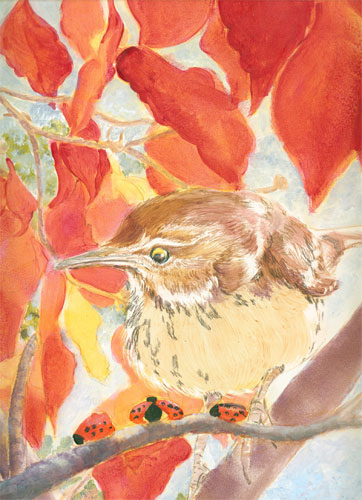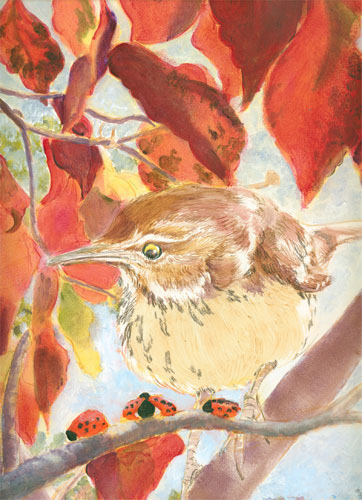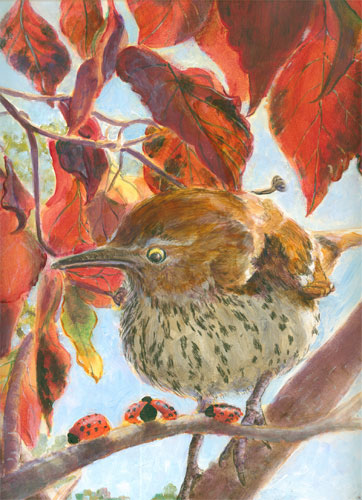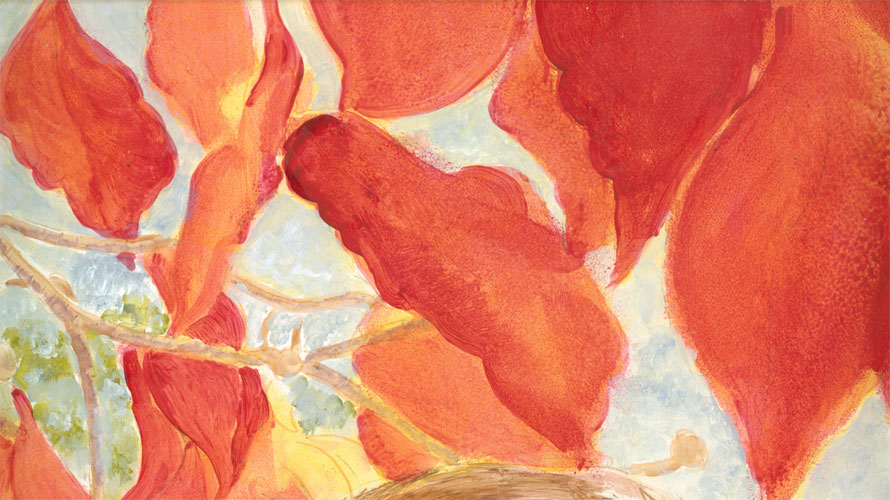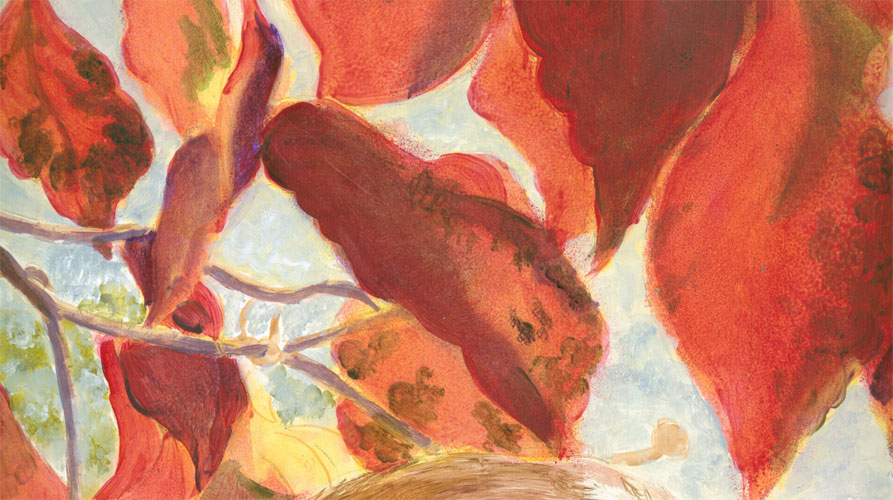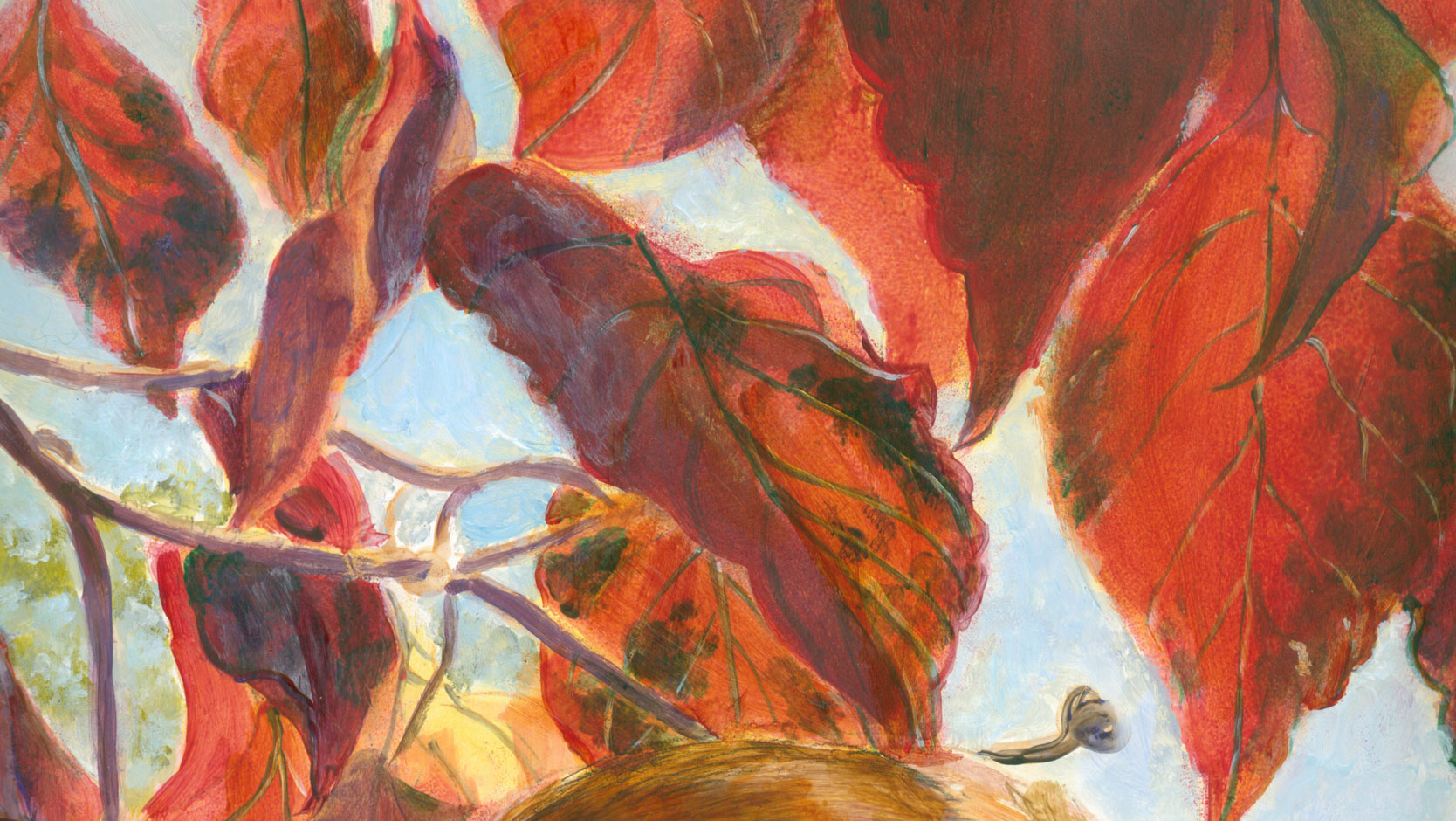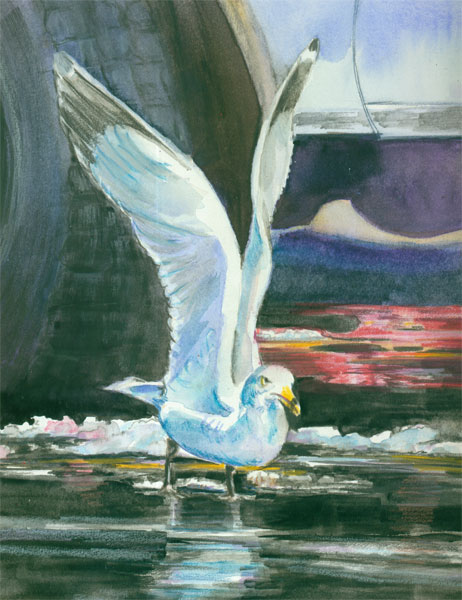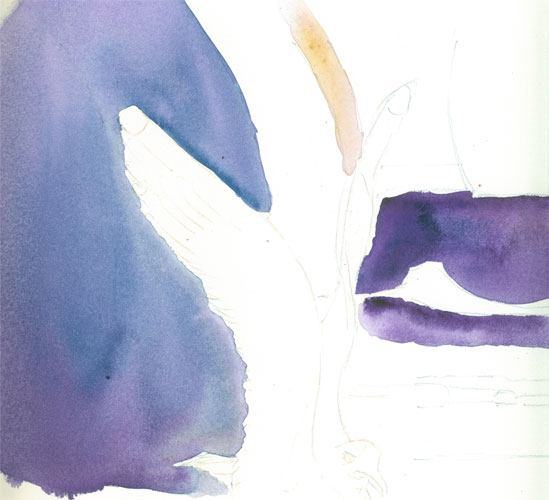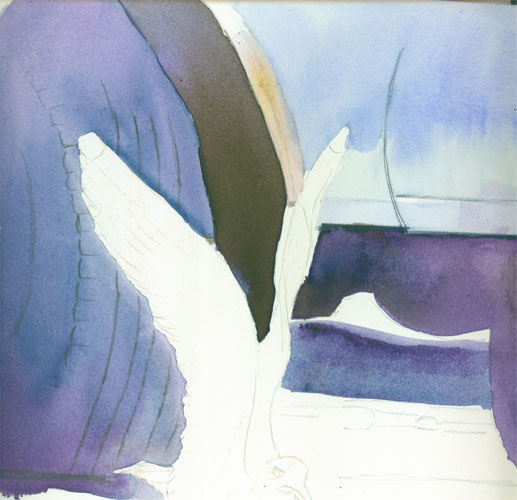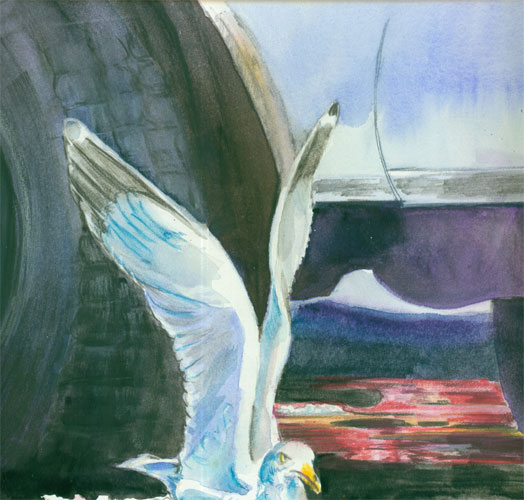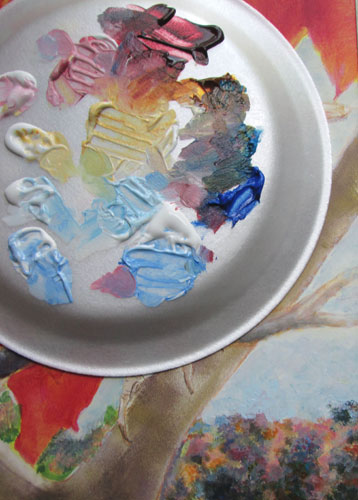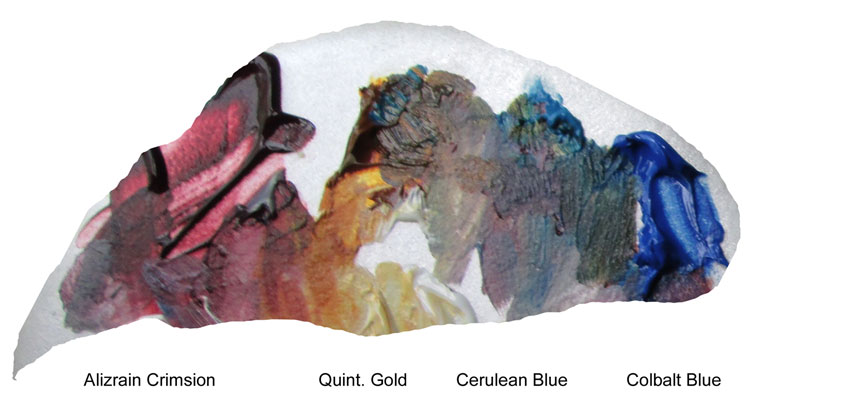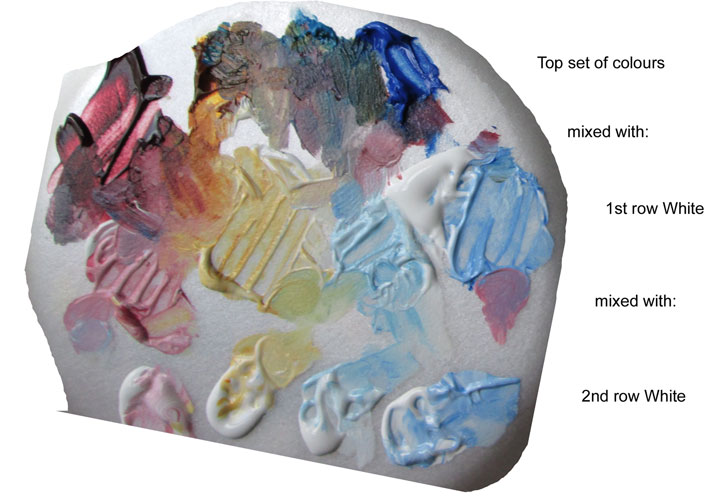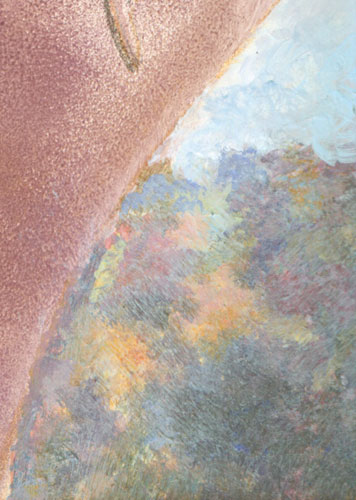This
blog post is a bit about an experiment I'm doing involving mixing
techniques and media. In my current painting, “Ladybugs:3,
Thrasher:0” I have used both differing painting techniques, (opaque
painting and glazed painting) and mixed media,(acrylic paints and
waxed based pencils). I talked a bit about the different painting
techniques I used in past posts, and now I'm “show and telling”
about mixing colored pencils with acrylic paints. I don't have any
evidence of the archival-ness of this mixing of media, but I think it
should work OK. I used wax based pencils in between two coats of
acrylic glazes and will follow that up with a top coat of acrylic
medium/varnish when finished. That should hold it to the canvas just
as the paint pigments are bound to the canvas by the acrylic medium.
The
image above shows the brown thrasher sketched in with very thin
acrylic glazes in brownish red and buffy......the “native” colors
of the bird. I'm painting on a prepared very smooth gessoed piece of
masonite. Light acrylic glazes (acrylic fluid paints mixed with an
acrylic glazing medium) dry pretty quickly and keep their “tooth”.
If acrylic paints are applied without a glazing medium or applied
thickly, when they dry will assume a plastic texture and wax colored
pencils won't adhere to that surface.
I drew
in the individual feathers on the upper body of the bird, along with
detailing the staring “stink eye” he's giving the ladybugs.
(“Stink eye” is appropriate as ladybugs stink to high heaven when
squashed.....something the thrasher seems to know!)
At the
same time you can see that the glazing of the backlit dogwood leaves
is progressing.
Since I
wanted to judge how dark to glaze the surrounding leaves, I darkened
the thrasher's buffy front and underbelly, with a glaze of
transparent brown and cobalt blue. After that dried I drew, with a
sepia wax colored pencil, the individual brown stippling on the
bird's belly. I covered that with another light blue glaze and
checked the effect of the glazed “shadow”.
Now I
just have to tweak details, and I will show the finished piece next
time.

